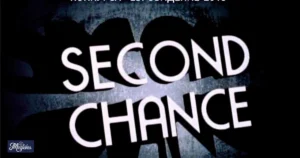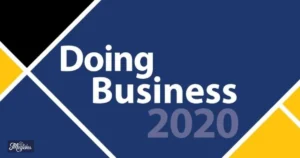“Expressing willingness to assist can create stronger connections and show your enthusiasm.”
In today’s fast-paced world, effective communication is more important than ever. We often find ourselves in situations where we need to express our willingness to assist others. Phrases like “more than happy to help” are commonly used to convey our eagerness to support. However, there are countless alternative expressions that can add variety and depth to our interactions.
By diversifying the phrases we use, we can enhance our communication skills and foster better relationships. Whether you’re responding to a colleague’s request, a friend’s favor, or a customer’s inquiry, using varied language can make your response more engaging. This blog will explore 35 alternative ways to say “more than happy to help” to enrich your conversations.
Now, let’s take a moment to consider how you can implement these phrases in your everyday life. Think about the scenarios in which you often find yourself offering help. Whether in a professional setting or a casual conversation, using different phrases can make your responses sound more genuine and personable. Let’s dive into these alternatives and see how they can transform your interactions.
35 Alternative Phrases for “More Than Happy to Help”
1. Glad to Assist
Scenario: Sarah’s coworker is overwhelmed with a project and asks for help.
Explanation: When Sarah replies with, “I’m glad to assist,” she conveys both her willingness and positive attitude. This phrase suggests that she enjoys helping and appreciates the opportunity to contribute.
Additional Tip: Use this phrase when you want to create a warm and inviting atmosphere, especially in collaborative settings.
2. Delighted to Support
Scenario: A client asks for assistance with a product issue.
Explanation: Saying, “I’m delighted to support you with this,” makes the client feel valued. This phrase expresses a sense of joy in helping, reinforcing the relationship.
Additional Tip: This expression works well in customer service scenarios, where establishing a connection is crucial.
3. Happy to Lend a Hand

Scenario: A friend struggles with moving furniture.
Explanation: By saying, “I’m happy to lend a hand,” you show a casual and friendly approach. This phrase emphasizes that you’re ready to physically help and be present.
Additional Tip: Use this phrase in informal situations with friends or family to create a relaxed vibe.
4. Pleased to Assist
Scenario: An intern asks a senior employee for guidance on a task.
Explanation: The senior employee can say, “I’m pleased to assist you,” which adds a level of professionalism. It indicates that they take the request seriously and are committed to providing help.
Additional Tip: This phrase is suitable for formal work environments where maintaining professionalism is essential.
5. At Your Service
Scenario: A waiter approaches a table to offer assistance.
Explanation: Saying, “I’m at your service,” adds a personal touch. It communicates readiness to help and dedication to the customer’s experience.
Additional Tip: Use this phrase in hospitality settings where customer satisfaction is the priority.
6. It’s My Pleasure
Scenario: A colleague thanks you for your help with a report.
Explanation: Responding with, “It’s my pleasure,” not only acknowledges their gratitude but also reinforces your willingness to help again in the future.
Additional Tip: This phrase works well in both personal and professional contexts, making it versatile.
7. Always Here to Help
Scenario: A neighbor asks for assistance with their lawn care.
Explanation: By saying, “I’m always here to help,” you convey reliability and a willingness to support them consistently.
Additional Tip: This phrase is effective for building trust within your community or friendship circles.
8. Happy to Be of Service
Scenario: A customer inquires about a service provided by a business.
Explanation: “I’m happy to be of service” emphasizes commitment to customer satisfaction. It indicates a readiness to address any needs.
Additional Tip: Use this phrase in professional customer interactions to enhance customer experience.
9. Ready and Willing to Help
Scenario: A colleague seeks help with a last-minute presentation.
Explanation: Saying, “I’m ready and willing to help,” shows your immediate availability and eagerness to assist under pressure.
Additional Tip: This phrase works well in time-sensitive situations where urgency is important.
10. Here to Help
Scenario: A client expresses confusion about a service.
Explanation: A simple, “I’m here to help,” is clear and direct, assuring the client that you are available and ready to address their concerns.
Additional Tip: This phrase is effective for quick responses, especially in email or chat communications.
11. Glad to Help Out

Scenario: A friend struggles with organizing an event.
Explanation: Saying, “I’m glad to help out,” conveys a friendly tone while expressing your willingness to take part in the planning.
Additional Tip: This phrase works well in casual settings where you want to maintain a light-hearted mood.
12. Eager to Help
Scenario: A team member asks for assistance on a challenging task.
Explanation: By responding with, “I’m eager to help,” you communicate enthusiasm and readiness to contribute to the team’s success.
Additional Tip: This phrase is great for collaborative projects, showing your proactive approach.
13. Here to Lend a Hand
Scenario: A friend asks for help with their computer.
Explanation: “I’m here to lend a hand” emphasizes your presence and readiness to assist, which can be comforting.
Additional Tip: Use this phrase in situations where emotional support may also be needed.
14. I Can Help With That
Scenario: A classmate struggles with understanding a topic.
Explanation: Saying, “I can help with that,” is straightforward and reassuring. It lets the other person know that you’re capable of providing assistance.
Additional Tip: This phrase is useful in educational environments, fostering collaboration among peers.
15. I’m Here for You
Scenario: A friend is going through a tough time.
Explanation: By saying, “I’m here for you,” you express emotional support and readiness to assist them in whatever way they need.
Additional Tip: Use this phrase to show empathy and solidarity in personal situations.
16. It’s No Trouble at All
Scenario: A colleague thanks you for helping with a project.
Explanation: “It’s no trouble at all” downplays the effort you made and reassures them that you’re happy to help.
Additional Tip: This phrase is excellent for maintaining a light-hearted atmosphere in professional interactions.
17. Count on Me
Scenario: A team member feels overwhelmed and asks for help.
Explanation: Saying, “You can count on me,” reinforces your reliability and commitment to supporting them.
Additional Tip: This phrase is effective in team dynamics, creating a sense of camaraderie.
Other Ways to Say Safe Travels
18. I’m More Than Willing
Scenario: A neighbor asks for help with their groceries.
Explanation: “I’m more than willing” expresses a strong desire to help, emphasizing your commitment to assisting them.
Additional Tip: Use this phrase when you want to highlight your readiness to help without hesitation.
19. Always Happy to Help
Scenario: A client expresses gratitude for your assistance.
Explanation: “I’m always happy to help” indicates that you genuinely enjoy providing support, enhancing your relationship.
Additional Tip: This phrase is great for reinforcing positive interactions with clients or colleagues.
20. Happy to Assist in Any Way
Scenario: A colleague asks for your opinion on a project.
Explanation: “I’m happy to assist in any way” indicates your willingness to help in multiple capacities, making you a versatile resource.
Additional Tip: Use this phrase to express openness to providing various types of support.
21. I’ve Got Your Back
Scenario: A friend feels anxious about a presentation.
Explanation: “I’ve got your back” conveys strong support and reassurance, indicating that they’re not alone in facing challenges.
Additional Tip: This phrase is particularly effective in personal situations where emotional support is needed.
22. I’m Here to Make Things Easier
Scenario: A coworker struggles with a complicated task.
Explanation: Saying, “I’m here to make things easier,” shows your intention to simplify their workload and provide assistance.
Additional Tip: This phrase is effective when you want to alleviate stress in a work environment.
23. Let Me Know How I Can Help
Scenario: A family member asks for assistance with planning a trip.
Explanation: “Let me know how I can help” is an open-ended invitation for them to specify their needs, demonstrating your willingness to assist.
Additional Tip: Use this phrase when you want to encourage others to communicate their specific requirements.
24. I’m Here to Offer Support
Scenario: A colleague feels overwhelmed by deadlines.
Explanation: Saying, “I’m here to offer support,” emphasizes your presence and readiness to assist in a meaningful way.
Additional Tip: This phrase works well in high-pressure situations to foster teamwork.
25. I’m More Than Willing to Help
Scenario: A friend seeks advice on a personal issue.
Explanation: By saying, “I’m more than willing to help,” you show a strong commitment to being there for them.
Additional Tip: This phrase is effective in personal relationships where trust and support are key.
26. You Can Rely on Me
Scenario: A team member needs help with a challenging project.
Explanation: “You can rely on me” reinforces your reliability and encourages collaboration.
Additional Tip: Use this phrase in professional settings to enhance teamwork and camaraderie.
27. I’m Happy to Step In
Scenario: A coworker is unable to meet a deadline.
Explanation: Saying, “I’m happy to step in,” indicates your readiness to take on additional responsibilities to help out.
Additional Tip: This phrase is useful when you want to demonstrate leadership and support in a team.
28. I’d Be Glad to Help
Scenario: A friend struggles with a craft project.
Explanation: “I’d be glad to help” conveys your eagerness to assist, creating a positive atmosphere.
Additional Tip: Use this phrase to reinforce friendly interactions in personal settings.
29. I’m Here to Help You Succeed

Scenario: A mentee seeks guidance on their career path.
Explanation: “I’m here to help you succeed” emphasizes your commitment to their growth and development.
Additional Tip: This phrase is especially powerful in mentoring relationships, fostering a supportive environment.
30. Happy to Be a Resource
Scenario: A colleague asks for information on a project.
Explanation: “I’m happy to be a resource” indicates your willingness to share knowledge and support others.
Additional Tip: This phrase is useful in professional contexts to position yourself as a helpful team member.
31. Always Here to Offer Help
Scenario: A classmate struggles with studying for an exam.
Explanation: “I’m always here to offer help” communicates your consistent availability and willingness to assist.
Additional Tip: This phrase reinforces a supportive learning environment among peers.
32. I’m Happy to Take That On
Scenario: A manager delegates a task to you.
Explanation: Saying, “I’m happy to take that on,” shows enthusiasm for taking responsibility and helping out.
Additional Tip: Use this phrase to demonstrate a proactive attitude in the workplace.
33. I’m All Ears
Scenario: A friend wants to talk about a personal issue.
Explanation: “I’m all ears” invites them to share their thoughts and feelings, showing that you’re ready to listen and support them.
Additional Tip: This phrase is effective in personal conversations, creating an open dialogue.
34. I’m Here to Help Anytime
Scenario: A coworker feels overwhelmed and asks for assistance.
Explanation: “I’m here to help anytime” assures them of your constant availability, fostering trust and collaboration.
Additional Tip: Use this phrase to encourage a supportive work culture where help is readily available.
35. Let’s Work on This Together
Scenario: A team member seeks collaboration on a project.
Explanation: “Let’s work on this together” promotes teamwork and shared responsibility, emphasizing your commitment to collaboration.
Additional Tip: This phrase enhances group dynamics, encouraging collective problem-solving.
Pros and Cons of Using Alternative Phrases
Pros
- Enhances Communication: Using varied phrases can improve the way you express willingness to help, making your interactions more engaging.
- Builds Relationships: Different expressions can foster deeper connections by showing sincerity and enthusiasm.
- Encourages Collaboration: Alternative phrases promote teamwork and a supportive environment, especially in professional settings.
Cons
- Overuse of Phrases: Relying too heavily on certain expressions can make them lose their impact.
- Cultural Differences: Some phrases may not translate well across cultures, leading to misunderstandings.
- Context Matters: Not every phrase is suitable for every situation; choosing the right one is crucial.
Conclusion:
Expanding your vocabulary with alternative phrases for “more than happy to help” not only enhances your communication skills but also enriches your relationships. By implementing these expressions, you can convey your willingness to assist in various situations more effectively.
Remember, the way you offer help can significantly impact how others perceive your support. So, the next time someone reaches out for assistance, consider using one of these alternatives to make your response stand out.
Answer to key questions
Why is it important to use alternative phrases for offering help?
Using alternative phrases enhances communication by making your expressions of willingness to assist more engaging and sincere. It helps build stronger relationships and fosters a collaborative atmosphere, especially in professional settings.
How can I choose the right phrase for a specific situation?
To choose the right phrase, consider the context and your relationship with the person you’re addressing. For formal situations, opt for professional expressions like “I’m happy to assist.” In casual settings, phrases like “I’m all ears” work better.
Can these phrases be used in both personal and professional contexts?
Yes, many of these phrases are versatile and can be adapted for both personal and professional interactions. However, it’s important to consider the level of formality and the relationship dynamics when selecting a phrase.
What should I avoid when using these phrases?
Avoid overusing specific phrases, as this can diminish their impact. Additionally, be mindful of cultural differences, as some phrases may not resonate well with everyone. Always ensure the phrase aligns with the context of the conversation.
How can I practice using these phrases effectively?
To practice effectively, incorporate these phrases into your daily conversations. Role-playing with friends or colleagues can also help. The more you use them, the more natural they will become in your interactions.

Hi, I’m Ethan Matthews: I make English easy with my clear and simple teaching style. I love helping learners feel confident in every lesson.










